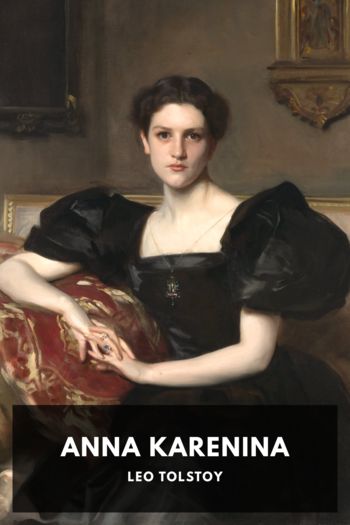What Is Art? Leo Tolstoy (good books to read for 12 year olds TXT) 📖

- Author: Leo Tolstoy
Book online «What Is Art? Leo Tolstoy (good books to read for 12 year olds TXT) 📖». Author Leo Tolstoy
I once saw the injustice of such condemnation of the new art with especial clearness, when, in my presence, a certain poet, who writes incomprehensible verses, ridiculed incomprehensible music with gay self-assurance; and, shortly afterwards, a certain musician, who composes incomprehensible symphonies, laughed at incomprehensible poetry with equal self-confidence. I have no right, and no authority, to condemn the new art on the ground that I (a man educated in the first half of the century) do not understand it; I can only say that it is incomprehensible to me. The only advantage the art I acknowledge has over the Decadent art, lies in the fact that the art I recognise is comprehensible to a somewhat larger number of people than the present-day art.
The fact that I am accustomed to a certain exclusive art, and can understand it, but am unable to understand another still more exclusive art, does not give me a right to conclude that my art is the real true art, and that the other one, which I do not understand, is an unreal, a bad art. I can only conclude that art, becoming ever more and more exclusive, has become more and more incomprehensible to an ever-increasing number of people, and that, in this its progress towards greater and greater incomprehensibility (on one level of which I am standing, with the art familiar to me), it has reached a point where it is understood by a very small number of the elect, and the number of these chosen people is ever becoming smaller and smaller.
As soon as ever the art of the upper classes separated itself from universal art, a conviction arose that art may be art and yet be incomprehensible to the masses. And as soon as this position was admitted, it had inevitably to be admitted also that art may be intelligible only to the very smallest number of the elect, and, eventually, to two, or to one, of our nearest friends, or to oneself alone. Which is practically what is being said by modern artists:—“I create and understand myself, and if anyone does not understand me, so much the worse for him.”
The assertion that art may be good art, and at the same time incomprehensible to a great number of people, is extremely unjust, and its consequences are ruinous to art itself; but at the same time it is so common and has so eaten into our conceptions, that it is impossible sufficiently to elucidate all the absurdity of it.
Nothing is more common than to hear it said of reputed works of art, that they are very good but very difficult to understand. We are quite used to such assertions, and yet to say that a work of art is good, but incomprehensible to the majority of men, is the same as saying of some kind of food that it is very good but that most people can’t eat it. The majority of men may not like rotten cheese or putrefying grouse—dishes esteemed by people with perverted tastes; but bread and fruit are only good when they please the majority of men. And it is the same with art. Perverted art may not please the majority of men, but good art always pleases everyone.
It is said that the very best works of art are such that they cannot be understood by the mass, but are accessible only to the elect who are prepared to understand these great works. But if the majority of men do not understand, the knowledge necessary to enable them to understand should be taught and explained to them. But it turns out that there is no such knowledge, that the works cannot be explained, and that those who say the majority do not understand good works of art, still do not explain those works, but only tell us that, in order to understand them, one must read, and see, and hear these same works over and over again. But this is not to explain, it is only to habituate! And people may habituate themselves to anything, even to the very worst things. As people may habituate themselves to bad food, to spirits, tobacco, and opium, just in the same way they may habituate themselves to bad art—and that is exactly what is being done.
Moreover, it cannot be said that the majority of people lack the taste to esteem the highest works of art. The majority always have understood, and still understand, what we also recognise as being the very best art: the epic of Genesis, the Gospel parables, folk-legends, fairytales, and folk-songs are understood by all. How can it be that the majority has suddenly lost its capacity to understand what is high in our art?
Of a speech it may be said that it is admirable, but incomprehensible to those who do not know the language in which it is delivered. A speech delivered in Chinese may be excellent, and may yet remain incomprehensible to me if I do not know Chinese; but what distinguishes a work of art from all other mental activity is just the fact that its language is understood by all, and that it infects all without distinction. The tears and laughter of a Chinese infect me just as the laughter and tears of a Russian; and it is the same with painting and music and poetry, when it is translated into a language I understand. The songs of a Kirghiz or of a Japanese touch me, though in a lesser degree than they touch a Kirghiz or a Japanese. I am also touched by Japanese painting, Indian architecture, and Arabian stories. If I am but little touched by a Japanese song and a Chinese novel,





Comments (0)